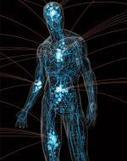Financial price dynamics and pedestrian counterflows: A comparison of statistical stylized facts
Daniel R. Parisi, Didier Sornette, and Dirk Helbing
Accepted Friday Dec 14, 2012
We propose and document the evidence for an analogy between the dynamics of granular counter-flows in the presence of bottlenecks or restrictions and financial price formation processes. Using extensive simulations, we find that the counter-flows of simulated pedestrians through a door display eight stylized facts observed in financial markets when the density around the door is compared with the logarithm of the price. Finding so many stylized facts is very rare indeed among all agent-based models of financial markets. The stylized properties are present already when the agents in the pedestrian model are assumed to display a zero-intelligent behavior. If agents are given decision-making capacity and adapt to partially follow the majority, periods of herding behavior may additionally occur. This generates the very slow decay of the autocorrelation of absolute return due to an intermittent dynamics. Our finding suggest that the stylized facts in the fluctuations of the financial prices result from a competition of two groups with opposite interests in the presence of a constraint funneling the flow of transactions to a narrow band of prices with limited liquidity.
Via FuturICT



 Your new post is loading...
Your new post is loading...







